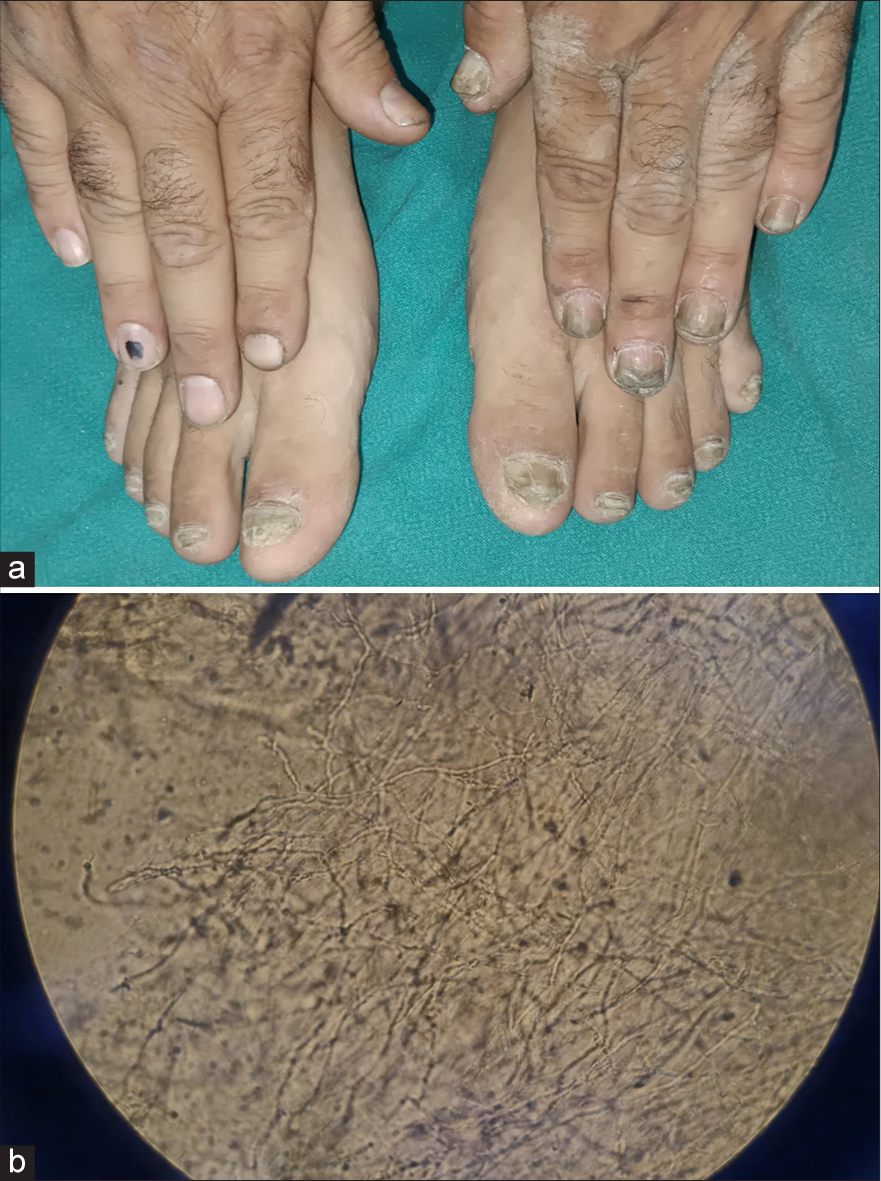Translate this page into:
One hand-two feet syndrome
*Corresponding author: Kurat Sajad, Department of Dermatology, Venereology and Leprosy, Government Medical College, Srinagar, Jammu and Kashmir, India. drkuratsajad@gmail.com
-
Received: ,
Accepted: ,
How to cite this article: Ul Islam M, Jain M, Sajad K. One hand-two feet syndrome. J Skin Sex Transm Dis. doi: 10.25259/JSSTD_68_2024
Here, we present a unique case of a 45-year-old male patient who presented to the outpatient department with itching, whitish scaling, and discoloration of nails of both feet and left hand. The patient is a known case of type II diabetic mellitus and is on treatment. On the clinical examination, we observed a yellowish discoloration involving all nails of both feet and left hand with subungual hyperkeratosis. Furthermore, well-defined plaque is on the left hand with fine adherent whitish scaling of approximately 5 × 4 cm. Potassium hydroxide (KOH) mount was suggestive of fungal hyphae [Figure 1].

- (a): Yellowish discoloration involving all nails of both feet and left hand with subungual hyperkeratosis and fine whitish scaling present in both feet. Furthermore, a well-defined plaque is on the left hand with fine adherent scaling and central clearing; (b): potassium hydroxide mount showing fungal hyphae.
One hand-two feet syndrome is an uncommon dermatophyte infection that affects one hand and feet with or without nail involvement. Commonly involving species include Trichophyton rubrum. It presents as scaling, erythema, and itching. This occurs due to autoinoculation of the dominant hand, usually due to frequent touching of infected feet with one hand. Diagnosis is achieved using a KOH mount to show fungal elements. Treatment includes topical and systemic antifungals. Preventive measures include proper hygiene, moisture-wicking socks, and preventive means of autoinoculation.[1]
Ethical approval
Institutional Review Board approval is not required.
Declaration of patient consent
The authors certify that they have obtained all appropriate patient consent.
Conflicts of interest
There are no conflicts of interest.
Use of artificial intelligence (AI)-assisted technology for manuscript preparation
The authors confirm that there was no use of artificial intelligence (AI)-assisted technology for assisting in the writing or editing of the manuscript and no images were manipulated using AI.
Financial support and sponsorship: Nil.





